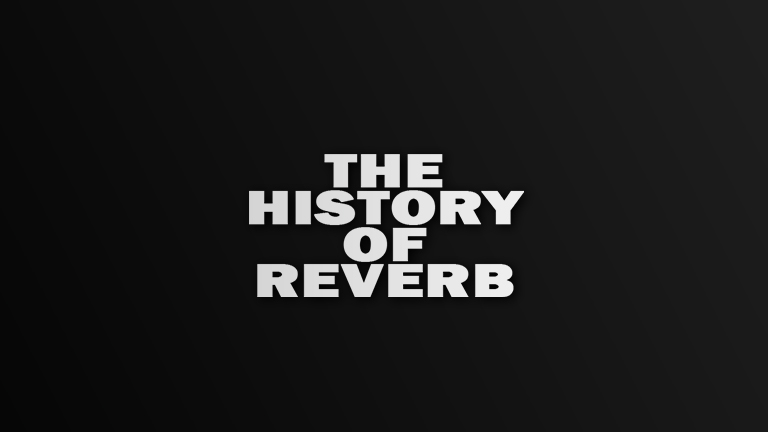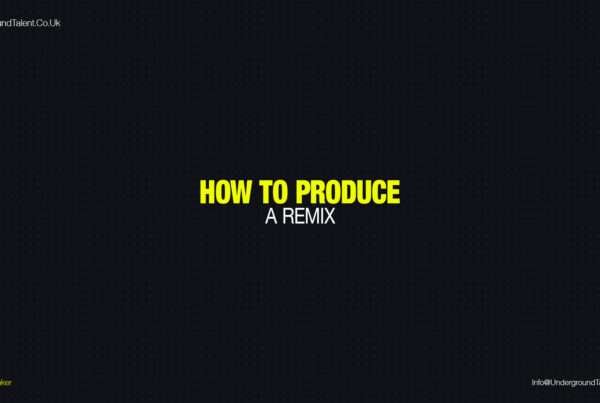
Photo by Guillaume De Germain
What is reverb?
Definition
Reverb is an audio effect that features in your daily life. Reverb is created when sound waves reflect off of various surfaces, usually in a confined space. This is not to be confused with delay which is the repetition on an audio signal.
Origin
The word reverb is a shortened form of the word reverberation. It comes from the Latin word reverberare, a blend of the prefix re, meaning back, and the root word verberare meaning to strike.
Example
A reverb can be found in spaces such as places of worship i.e. a church. The sound of the building adds to the effect on the vocals. Our brains are used to hearing these reflections in real life this means that adding them artificially to recordings will make us perceive the sound to be coming from a certain environment. This can be a very emotive and powerful music production tool.
Reverb plugin effects try to emulate a natural reverb to make atmospheric and ambient sounds, this is achieved by adding the illusion of space to an instrument’s tone. Control of reverb is essential when recording, either by exploiting a space for its particular natural acoustics or by dampening the studio environment.
This can be through the use of foam padding and other absorbent materials. When discussing a track, producers would often describe a track with a lack of reverb as being dry, a track with reverb is referred to as having a wet sound. As with all effects, how the tool is implemented (whether subtly or exaggerated) will give differing results.
An example of reverb being used in a different method to achieve a new result is in Phil Collins’ music from the 1980’s. He was the first to utilise reverb on the snare drum to create a bigger sound.
Reverb is the butter in the music sandwich, the sandwich is fine without it but used properly it can take things to a whole new level.
A Quick Summary of the History of Reverb
While naturally occurring ambience has always been a feature of recorded music, but when producers saw the need to create differing room sounds artificially (to save money and time) in the late ’30s recording engineers developed artificial reverb. This gave them the ability to control and shape the sounds of the spaces in which their instruments were being placed. This led to an explosion in the amount and variation of music that was being recorded.
How they did that?
The early attempts at artificial reverb effects were put on tracks by simply outputting recordings, that was recorded in acoustically treated rooms, through a speaker placed within a space that had the type of reverb that the engineer required and then captured the resulting sound. Small rooms and chambers were the first types of reverb to be developed in this way.
But shortly the leading musical production and equipment manufacturers such as EMT, Fender and Hammond developed a range of more interesting, flexible and portable possibilities in the shape of spring and plate reverbs, both of which are often in use today, even if it’s in a mostly digital form in the form of plugins.
Types of Reverb
The main variations for generating an artificial reverb are through an amp such as the Fender Twin Reverb, analogue hardware equipment such as plate reverb, digital pedals and plugins for recording software. But many types of reverb can be used depending on the desired effect, see below for an explanation of each type:
Because reverb is a naturally occurring ‘effect’ the types of reverb often have names that describe the space that they replicate, although there are common ‘artificial spaces’ as well which are named after how they are created.
- Room
- Hall
- Cathedral / Stadium / Chamber
- Spring
- Plate
- Reverse
- Gated
Room
Room reverbs replicate the natural sound reflections that you can find in a room. The reflections in a room are usually quite short and will have different characteristics depending on the room’s shape. Great recording studios such as Abbey Road have spaces with beautiful natural reverb.
Hall
Hall reverbs are similar to Room Reverbs but are generally larger. Usually with longer reverb times and possibly different ‘shaped’ frequency spectrum, depending on the space being replicated.
Cathedral / Stadium / Chamber
The names of reverb types let you know what the reverb’s desired effect will be. A Stadium reverb often has a large pre-delay (a gap before a reverb starts), and a Cathedral usually has a lot of reflective stone surfaces and has a very dense reverb. Chamber reverbs emulate the sound of being in a stone chamber.
Spring Reverb
Spring reverb is an artificial reverb created by springs in a box. It is the most common type of reverb found in tube guitar amplifiers.
Plate
Plate reverb is another artificial reverb created by a metal plate suspended in a specifically designed box. When a sound is fed to the metal plate via a transducer, the plate vibrates in a specific way and creates an effect very similar to the way that we hear reverb naturally. These vibrations are picked up with small pickups and fed back in with the main signal. An example of this is the EMT 140.

Image by Universal Audio
Reverse
Reverse reverb is a digitally altered reverb where the reverb effect is reversed and gives a strange and ominous sound.
Gated
A Gated reverb stops suddenly rather than fading out naturally and was used a lot on snare drums in the 1980s. As previously mentioned this technique was ushered in by Phil Collins.
Reverb does that thing where you make one sound and it grows to 20 times its original size and fills everything up.





